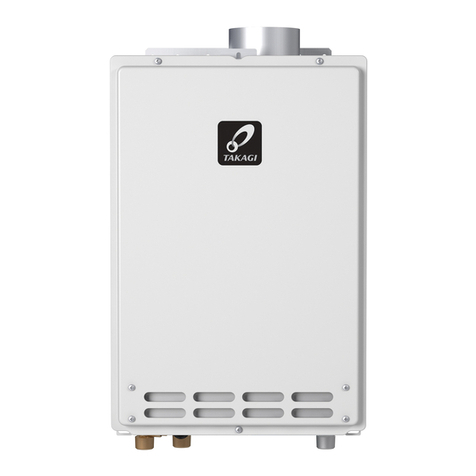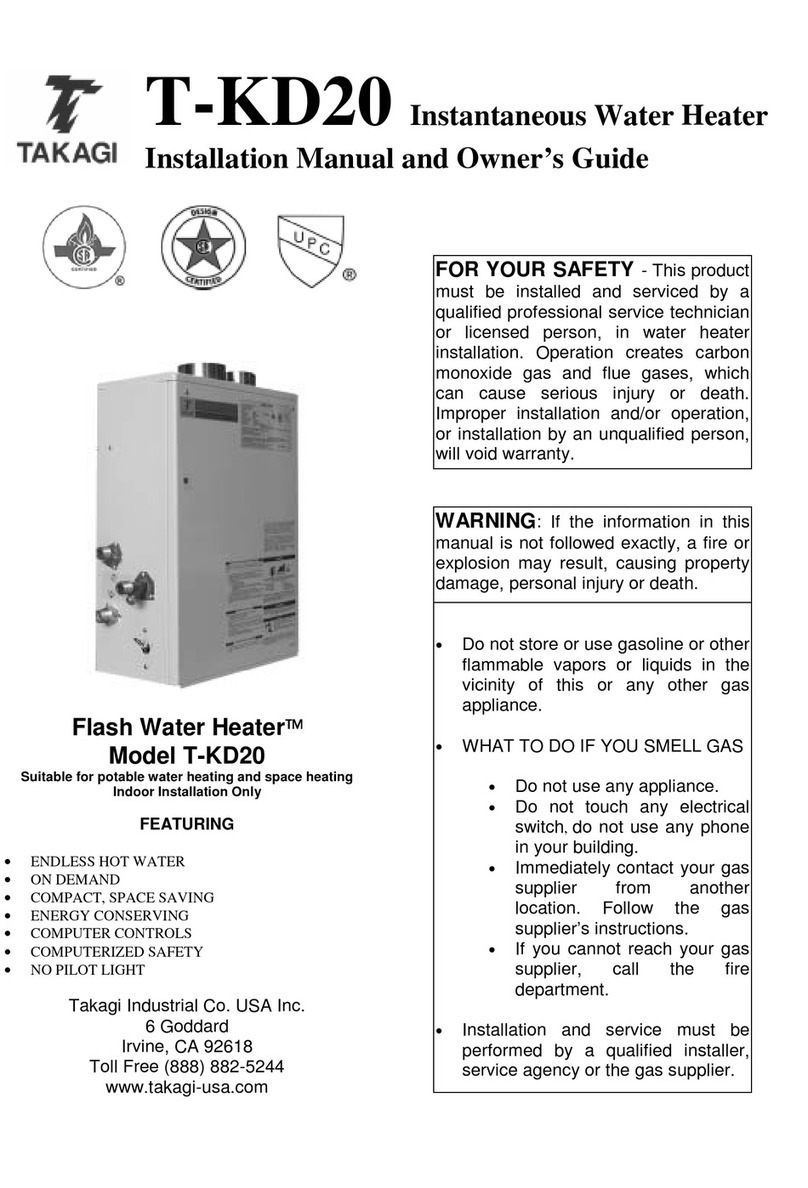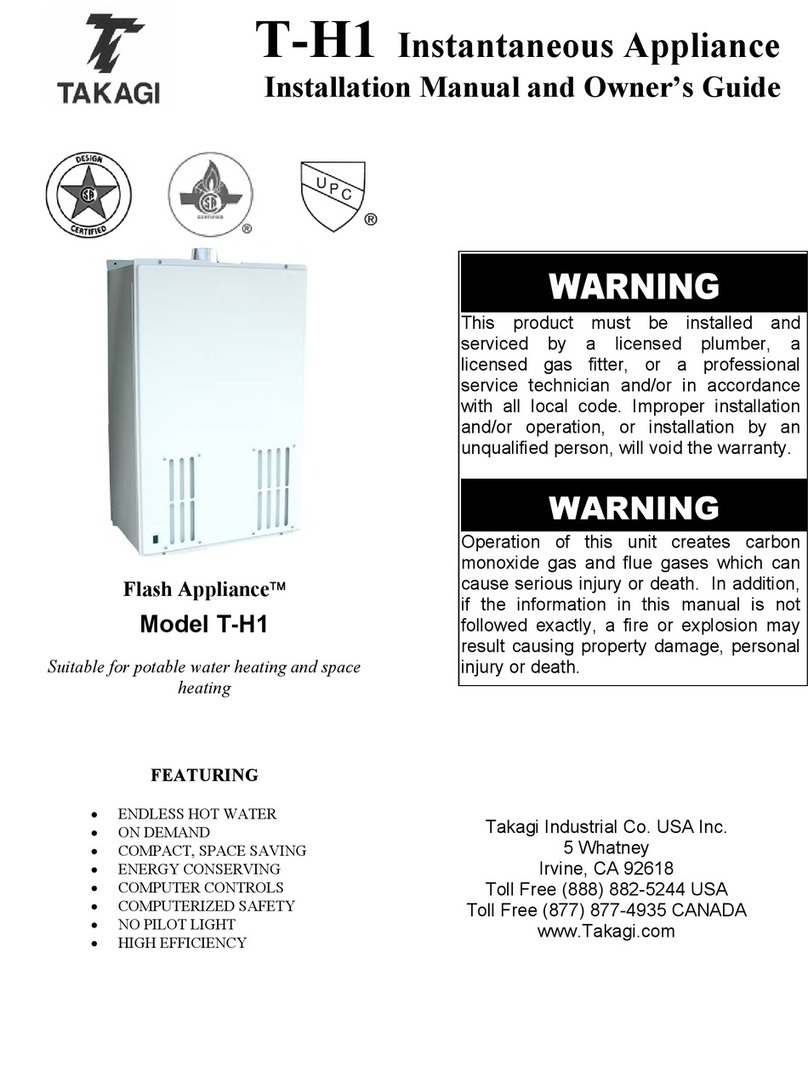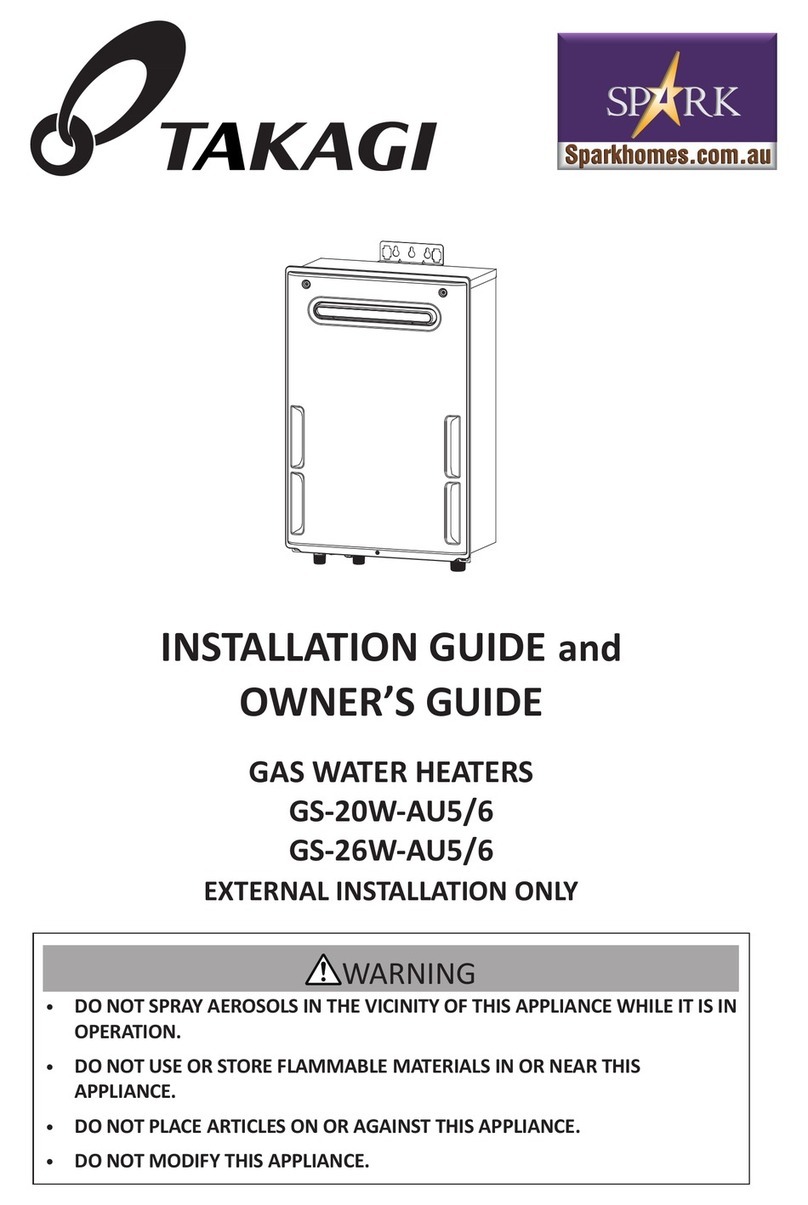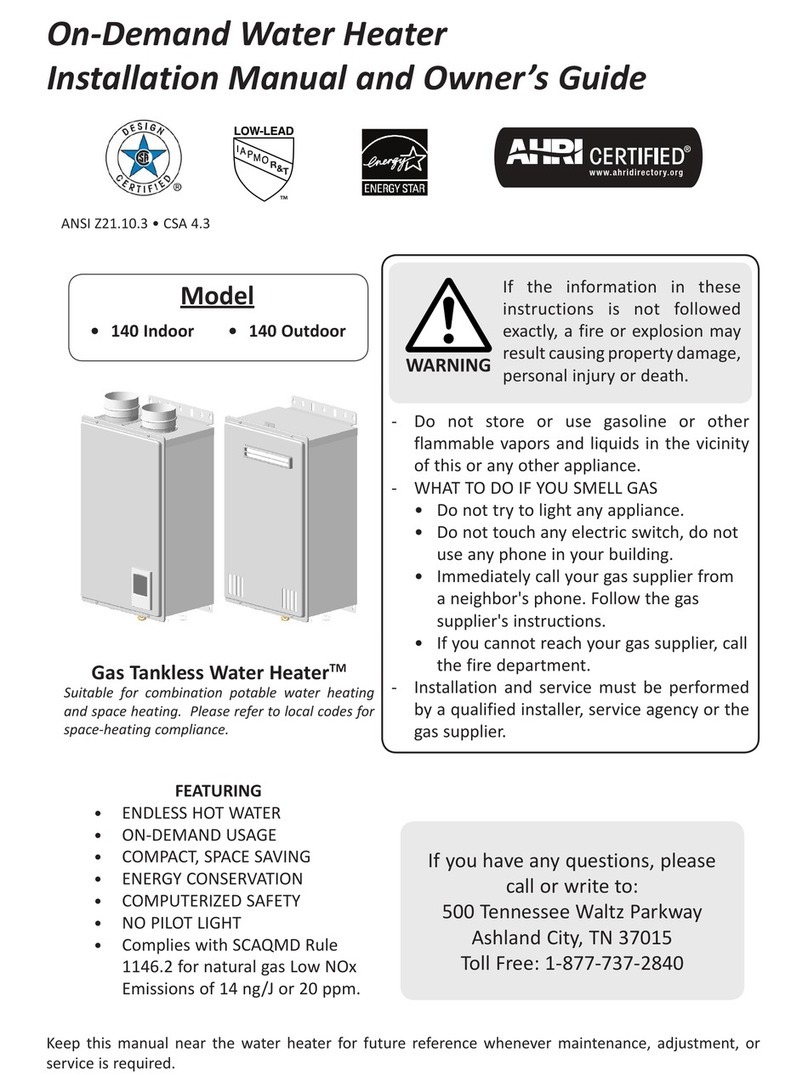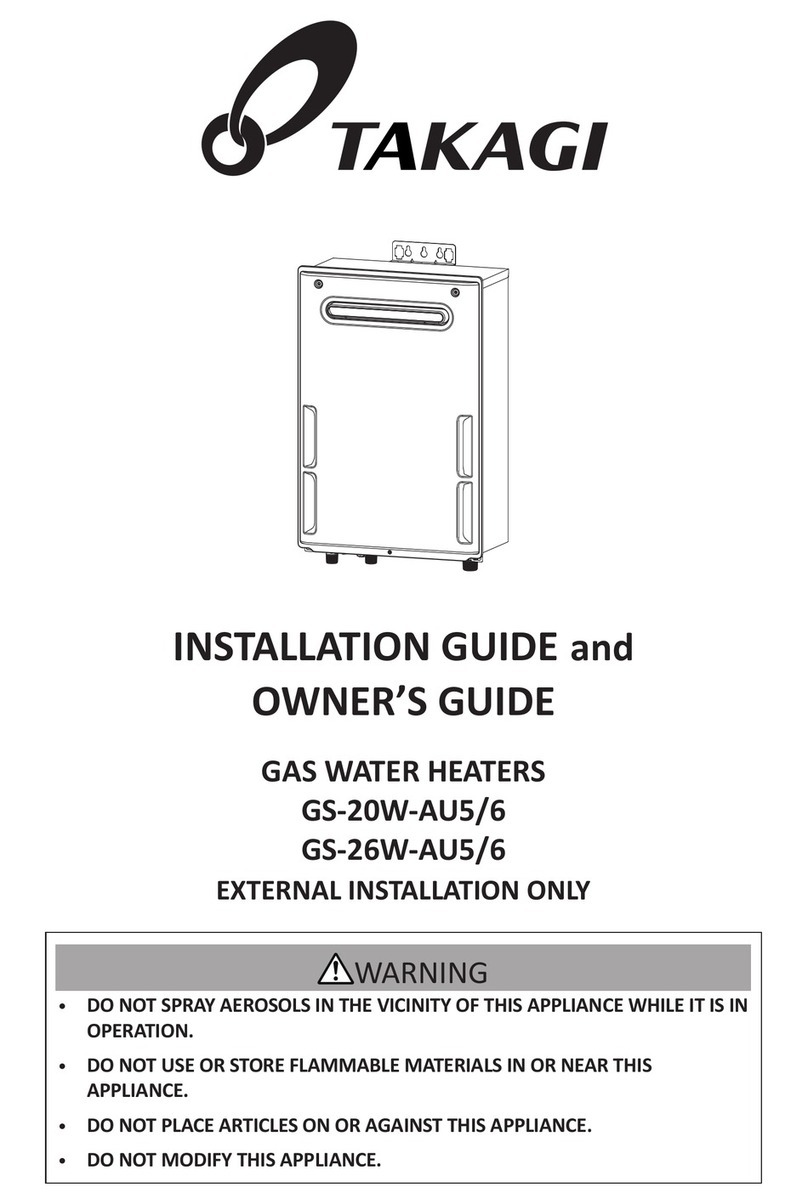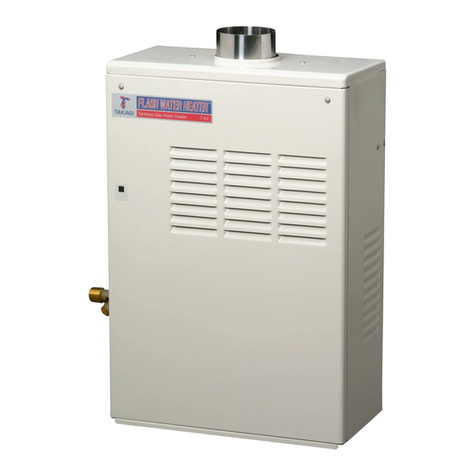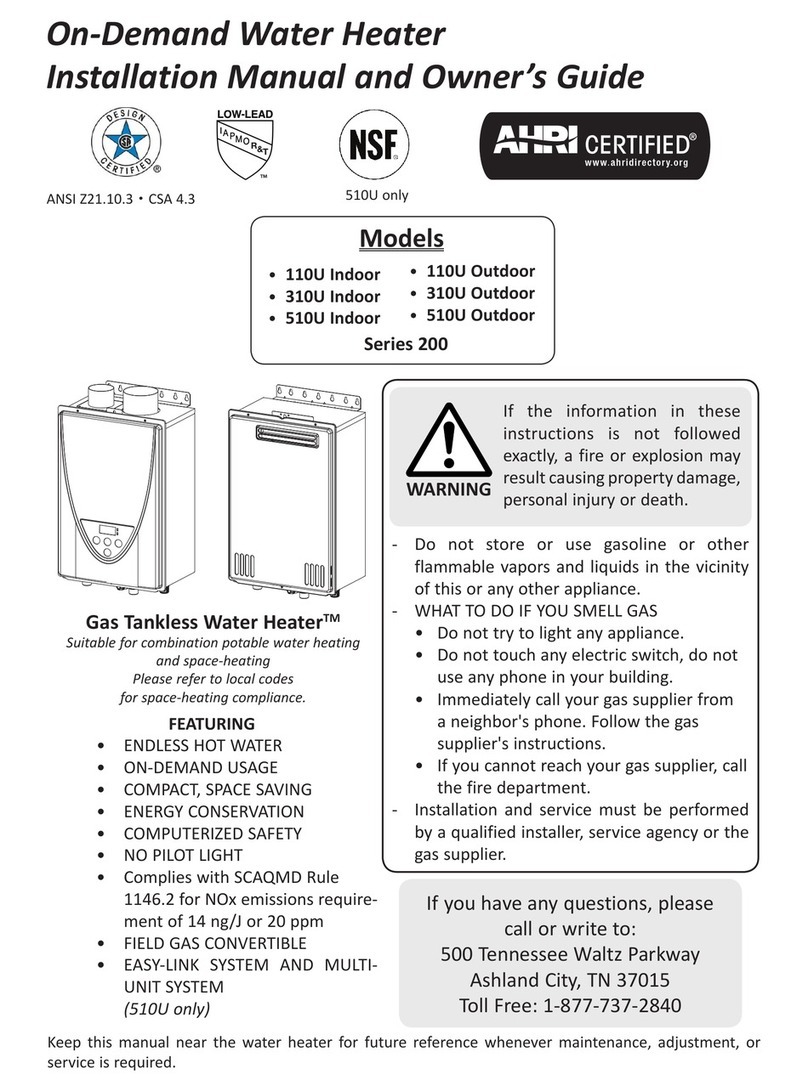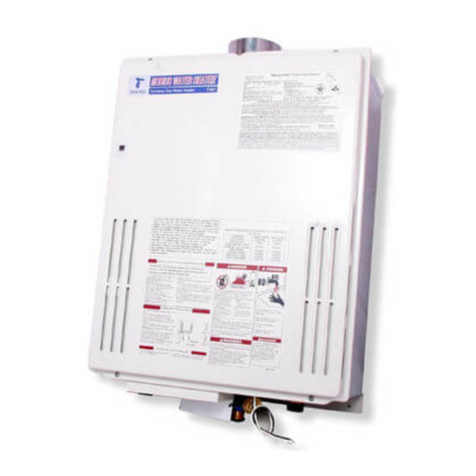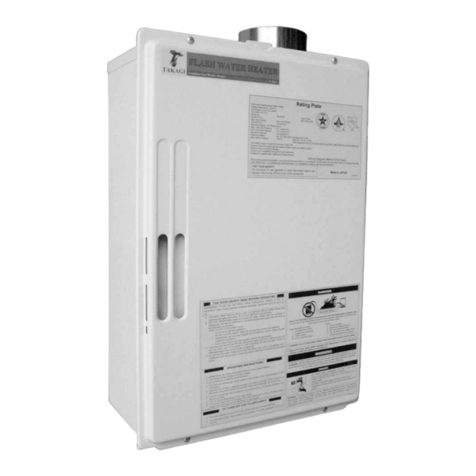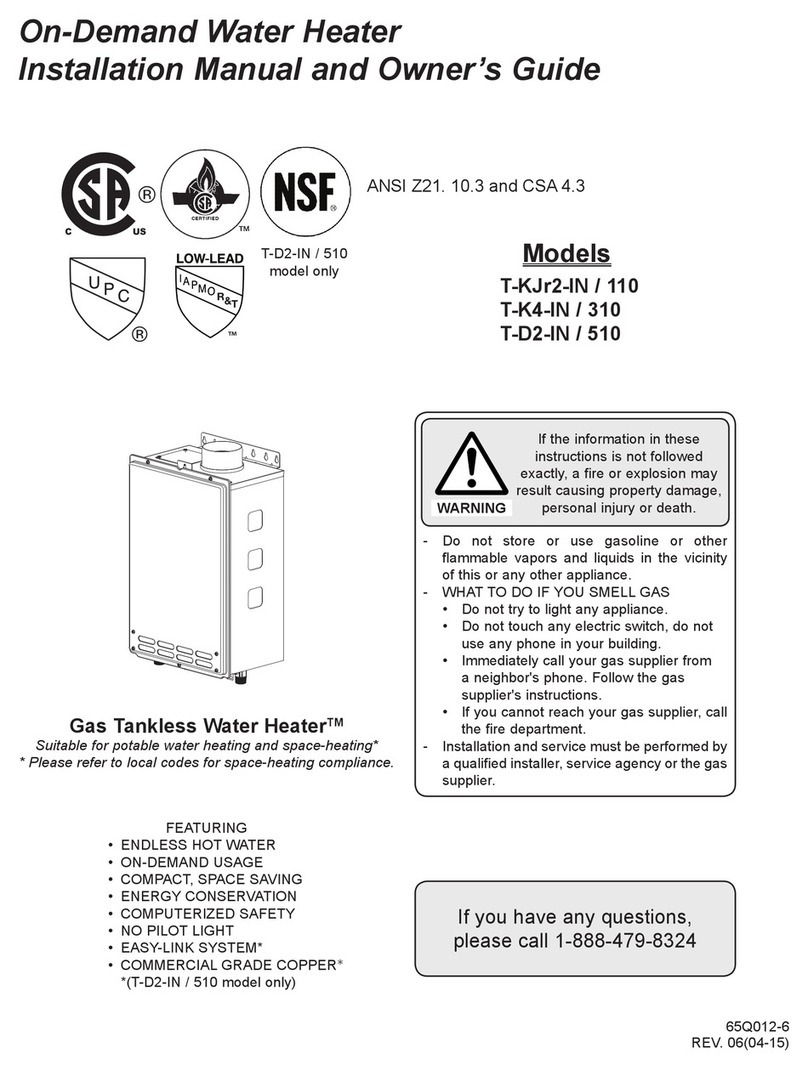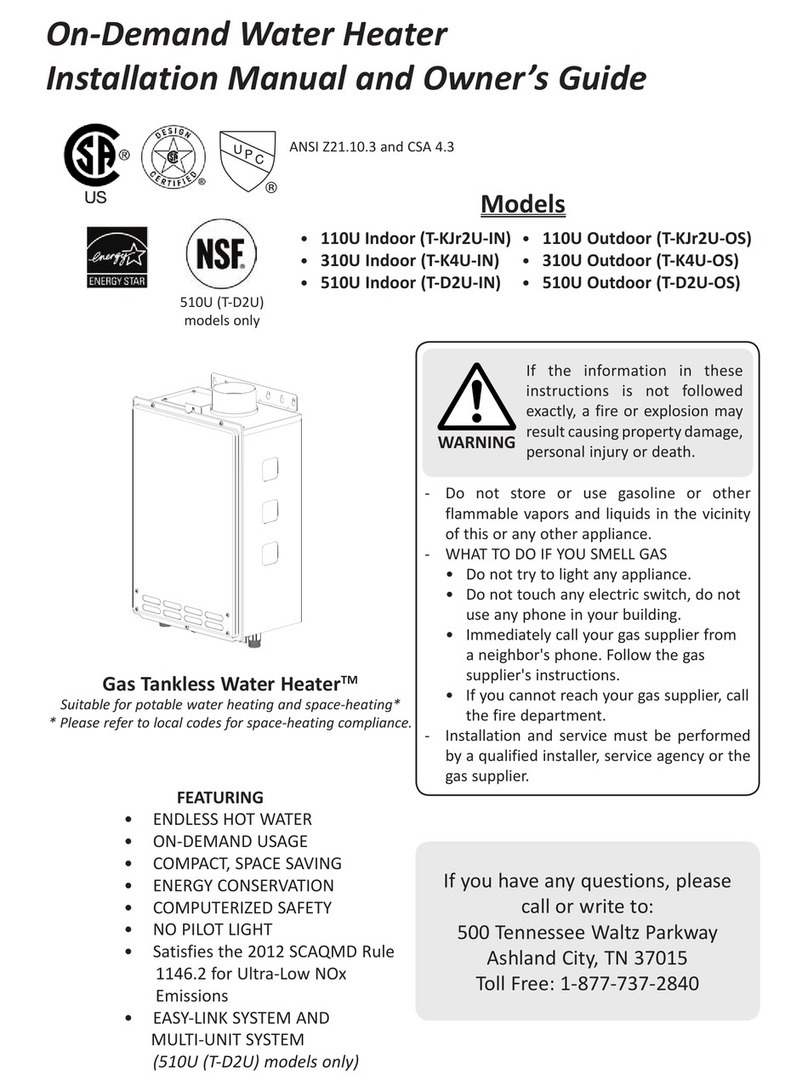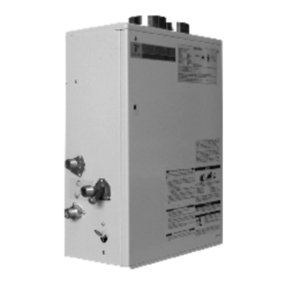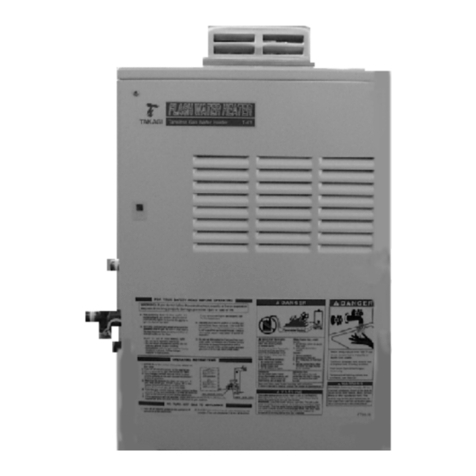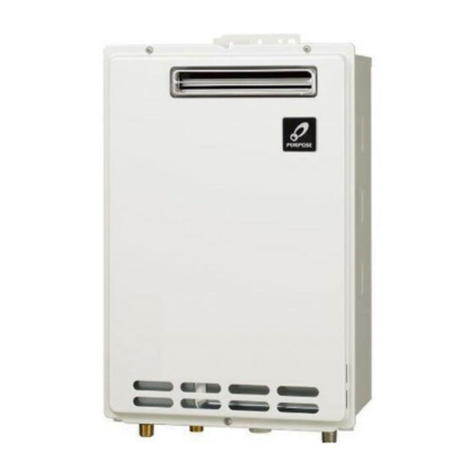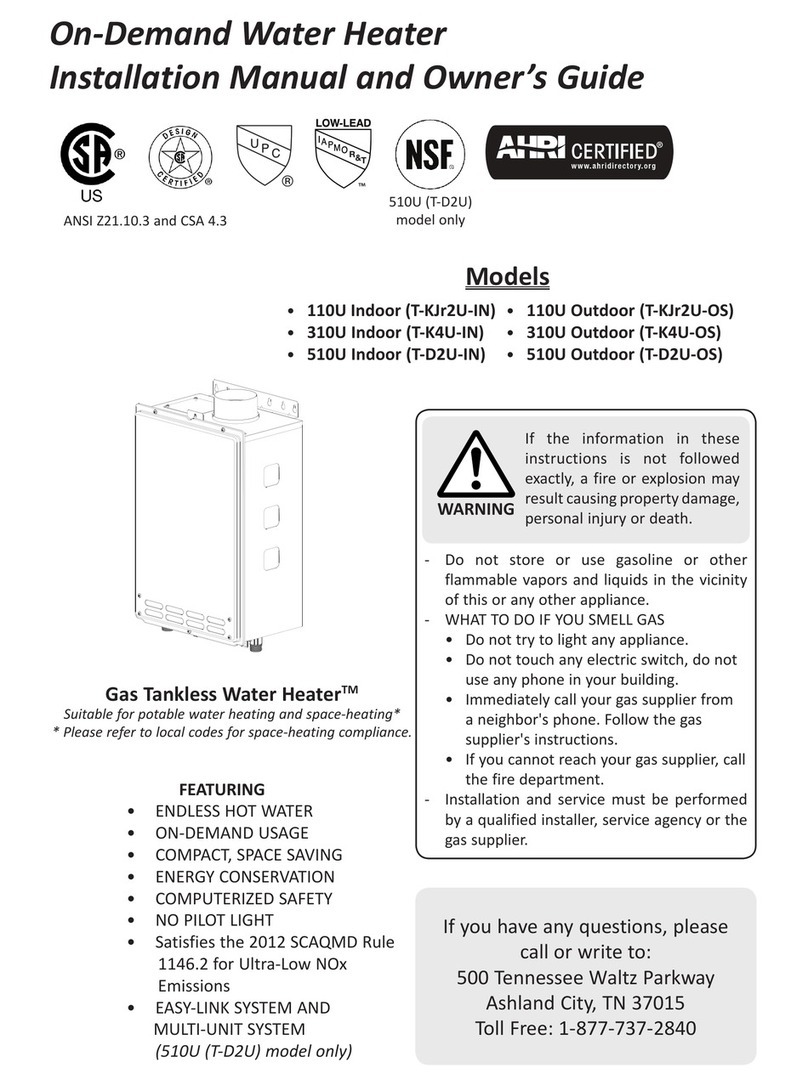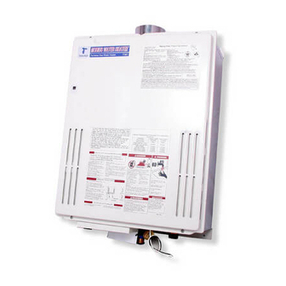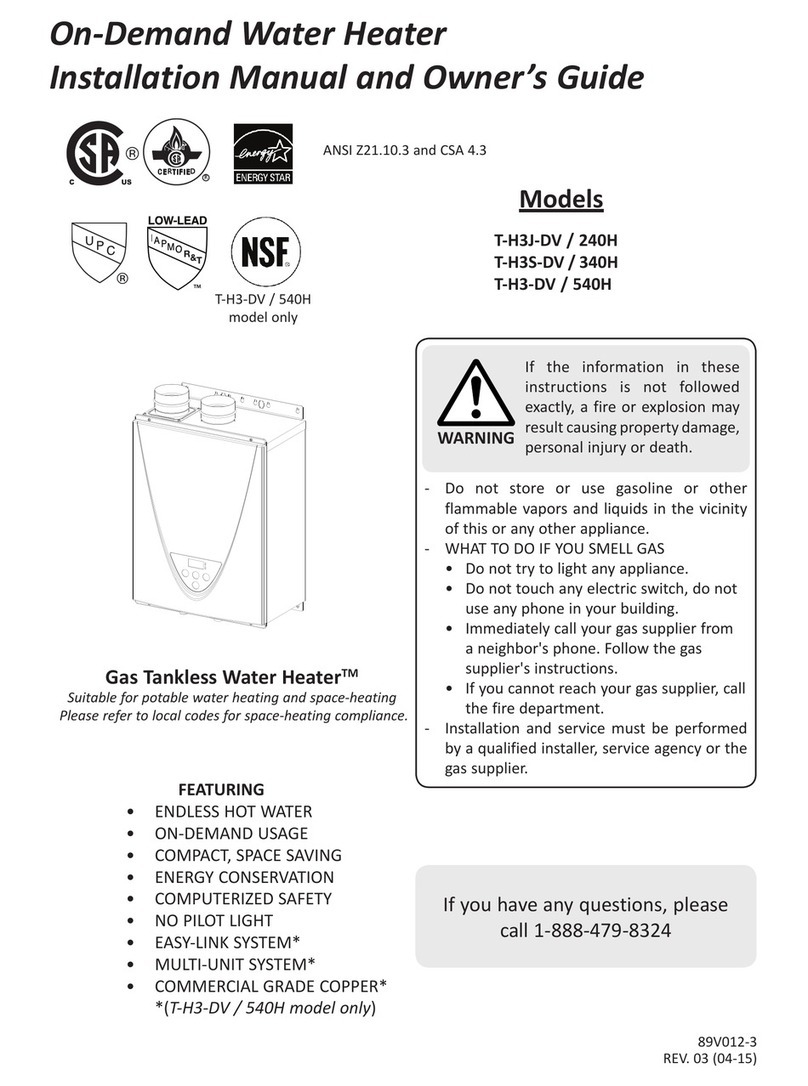
INSTALLATION
On-Demand Water Heater Installation Manual and Owner’s Guide 9
INSTALLATION
• WARNING!
• Follow all local codes, or in the absence of local
codes, follow the current edition of the National
Fuel Gas Code: ANSI Z223.1/NFPA 54 in the USA
or B149.1 Natural Gas, Propane Installation Code
in Canada.
• Follow the electrical code requirements of
the local authority having jurisdiction. In the
absence of such requirements, follow the current
edition of the National Electrical Code ANSI/NFPA
70 in the U.S. or the current edition of CSA C22.1
Canadian Electrical Code Part 1 in Canada.
• Failure to do so could result in death, personal
injury, and/or property damage.
• All gas water heaters require correct installation to ensure
safe and efficient operation. This manual must be fol-
lowed exactly. Read the "Safety Guidelines" Section.
• The water heater shall be securely wall-mounted or
mounted on a stand, or installed in the approved recess
box.
• For outdoor installations, locate the water heater in an
open , un-roofed area. Maintain 3 in. (76 mm) minimum
clearance from the left and right sides of the unit. See
"Clearances" on p.12.
• The length of piping between the water heater and fixture
determines the time it takes for the hot water to arrive.
Consider installing the water heater closer to the fixtures,
if the plumbing system allows for it. The water heater
should be the first appliance to access the water line after
utilities water meter.
• Install the water heater in a heated area where below
freezing temperature cannot occur. Units installed in
areas subject to below freezing temperature MUST follow
the steps outlined on p. 49. The warranty does not cover
damage caused by freezing.
• Maintain proper space for servicing. Install the unit so
that it can be connected or removed easily. Refer to the
"Unit clearances" section for proper clearances.
• Carefully plan the installation location of the heater and
vent terminations. Contaminants such as aerosols, lint,
and fine powders (including flour) can clog the air intake
and reduce the operation of the fan. This, in turn, can
cause improper combustion and reduce the life of the
water heater. Regularly ensure that the area around the
water heater, vent termination, and air intake is free of
dust, debris, and other contaminants. In environments
with a high level of contaminants (laundry facilities, hair
salons, pet salons, chemical plants, commercial kitchens,
etc.), direct venting is required.
• The water heater must be installed where the proper
amount of combustion air will be available to it at all times
without obstructions. When installed indoors, the water
heater can be direct vented.
• Do not install the unit where the exhaust vent is pointing
into any opening in a building or where the noise may
disturb your neighbors. Make sure the vent termination
meets the required clearance from any doorway or open-
ing to prevent exhaust from entering a building. (Refer to
pp. 10, 26 and 27.) Check local code requirements prior
to installation.
• These units are equipped with a thermistor in the exhaust
system. This component prevents heat damage to ABS,
PVC, CPVC, or polypropylene (Plastic) venting when it is
used. If the exhaust gas temperature exceeds 140°F (60
°C), this component will enable the unit to safely stop
operations.
• If the water heater is used as a direct-vent appliance, the
unit requires 2 in. or 3 in. combustion air supply pipe. The
intake pipe must be sealed airtight. Refer to pp. 14 to 16,
and pp. 21 to 24 for more detail.
• Terminating the venting through a sidewall is recommend-
ed for the direct-vent system.
• Running the exhaust vent and the intake pipe parallel is
recommended.
• Terminating the exhaust and intake on the same wall/
surface is recommended. Terminating in the same pres-
sure zone allows for pressure balancing, which prevents
nuisance shutdowns.
• The manifold gas pressure is preset at factory and is com-
puter controlled. The pressure should not need adjust-
ment.
• Electrical service to the water heater requires a means of
disconnection. This will allow power to the water heater
to be shut off for servicing and safety purposes.
Step 1: Read this section before you start...
